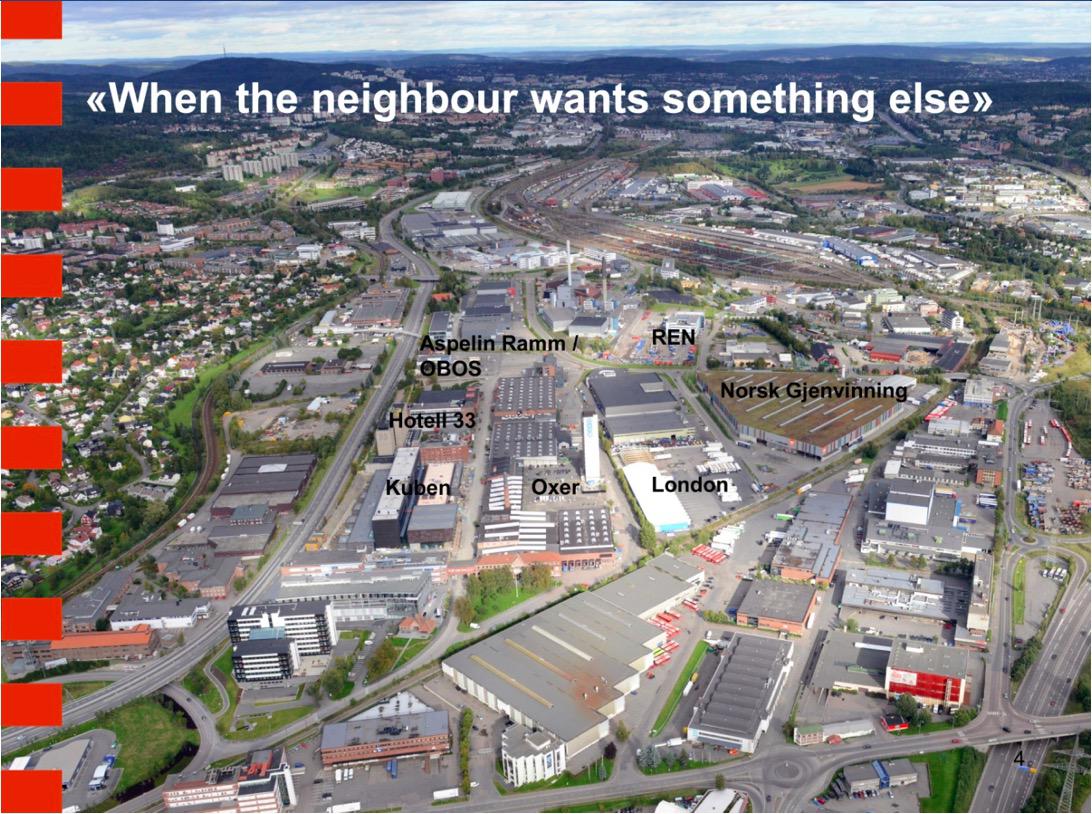THE OSLO MODEL AS A NEGOTIATION ARENA BETWEEN PUBLIC AND PRIVATE INTERESTS, OSLO, NORWAY

PROJECT DESCRIPTION
Oslo is a demographically fast growing city. It is situated between the sea and hilly forests which are key qualities for the city. In order to preserve the natural qualities and ensure a more sustainable growth the city has therefore decided a strategy of transformation and densification of existing urban areas. Since the city often has no ownership there, negotiation is a crucial instrument, often dealing with many developers and owners on one site.
Envisioning & experimenting
First of all Oslo acknowledges that for some cases the traditional master plan is the right tool. For instance when there is only one land owner or when there is a high dependency on new public infrastructure.
But in other cases the traditional planning processes are too complicated, too rigid and too slow, making it unattractive for private parties to start developments. Therefore Oslo is trying new ways to speed up and simplify this process of transformation and make it more flexible and resilient. The city is essentially doing this by focusing on the essentials and leaving room for private parties to fill in the rest.
Mainstreaming
The Planning Program defines general guidelines, chooses an urban development principle and sets rough parameters for land use, height and utilization. It is the basis for several plans which can also be developed and made by the private parties themselves.
The VPOR defines the boundary, size and desired qualities of public spaces, identifies and describes public projects and builds in a certain flexiblity, so that market parties can fill in the rest.
There are several cases when the above mentioned fast track planning options can be used. For instance when the plan is not too complicated, when time is an issue or when landowners/ developers and the planners have common interests (or can be made to understand that they have a common interest). After agreeing with the municipality on the VPOR and/ or the Program Plan, private developers make their own plans based on that. The developers can choose to build the public infrastructure themselves or pay the municipality to do so.
LESSONS LEARNED / RESULTS
- Provide the speed and flexibility that is sometimes needed, but keep in control of the essentials
- Do not be afraid to let go some of the tasks that were traditionally done by the municipality
- Better synergy between the public and private interests.
- Good basis for a fair distribution of cost.
- Faster and less time-consuming process.
- More flexible plans with room for change.
DATA
City information
Population size: 501 th - 1 mPopulation development dynamics within the city administrative limits (at the time of the project): Growing
Population development dynamics of the functional urban area (at the time of the project): Growing
Website of the city: https://www.oslo.kommune.no/startpage/
Project information
Project territorial scale:
Municipality (city/town/suburb)Project geographical area: Periphery of the city
Project/building proportions: No data/not applicable; Project Area: No data/not applicable
Project main actors: City Government; Investors, private businesses; 0
Project dominant property ownership: Private
Project development stage (at the time of description): No data/not applicable
Project duration: No data/not applicable
Project starting date: No data/not applicable



